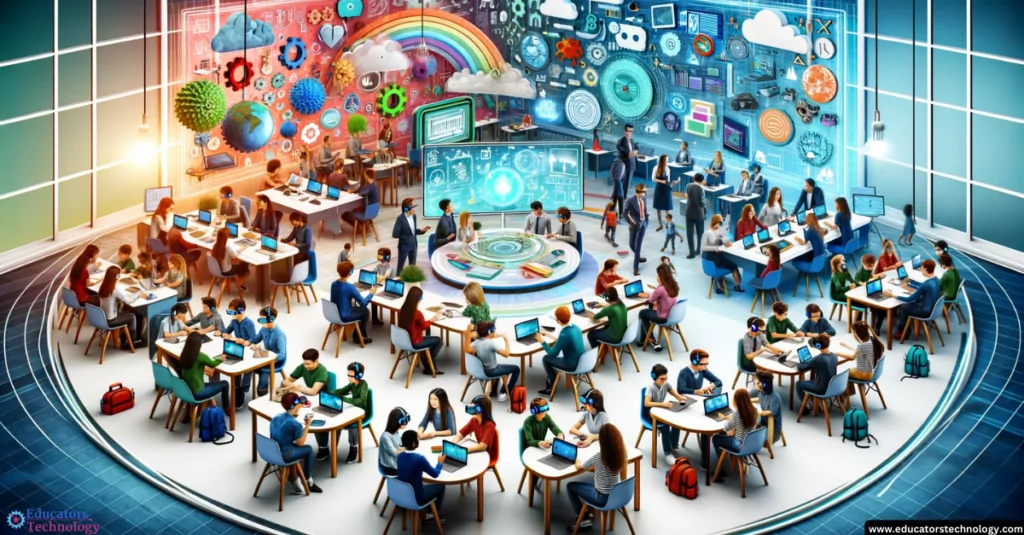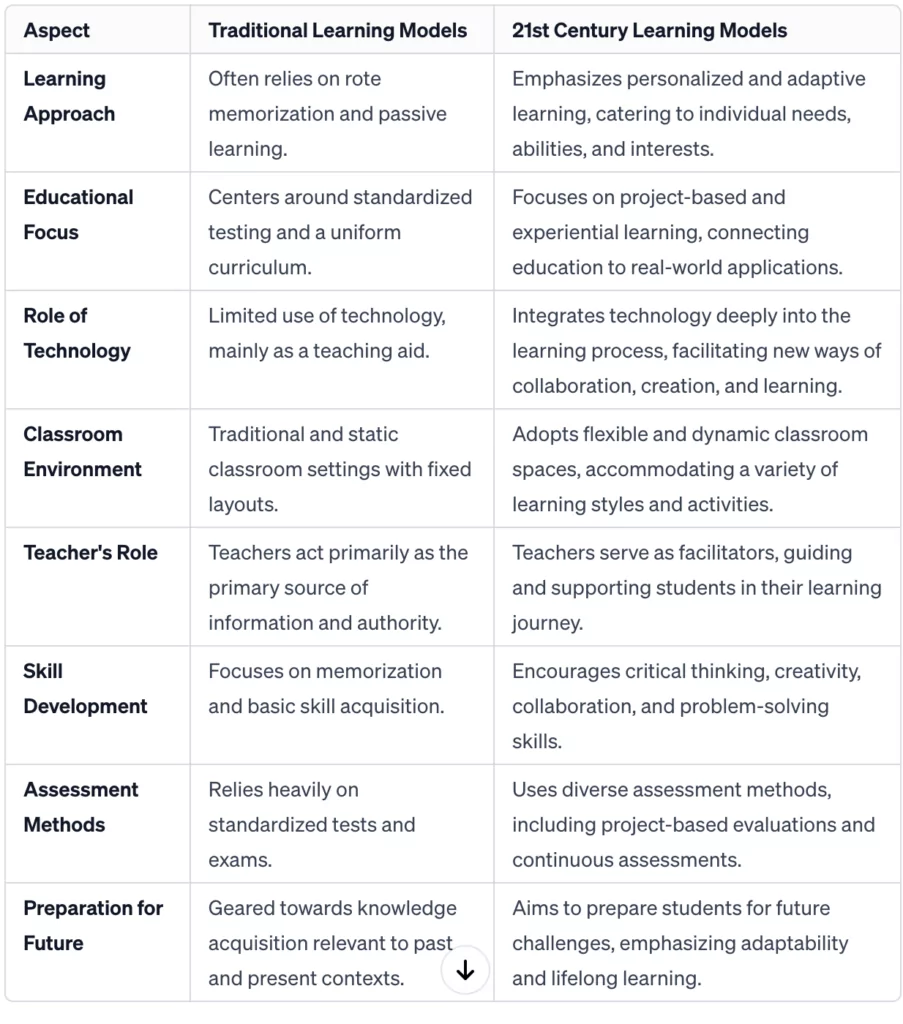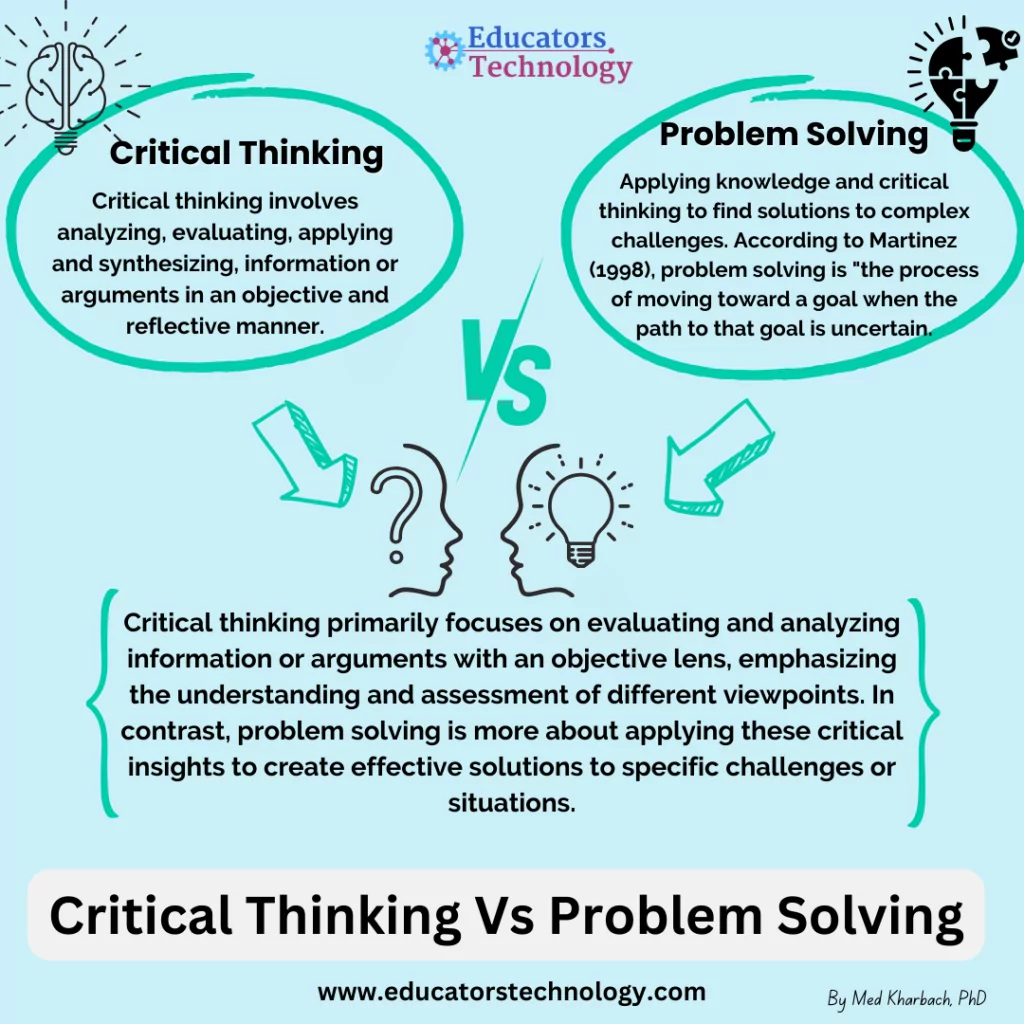Welcome back to our ongoing series on 21st-century education, where we delve into various themes that shape the educational landscape of our time. Drawing from my experience as an edtech blogger and educator, I’ve been sharing insights and reflections on this dynamic and evolving field. In previous posts, we explored the characteristics of 21st-century teachers , characteristics of the 21st century classroom, and the traits of 21st-century learners. Today, we turn our focus to the characteristics of 21st-century learning itself.

To kick things off, we’ll start with a clear definition of what 21st-century learning entails, setting the stage for a deeper exploration of its features and implications.
It’s important to note that while technology undeniably plays a pivotal role in this discussion, it’s not the sole focus. Yes, technology is a critical medium that has transformed the educational landscape, but it’s the learning habits and skills that arise from this digital integration that truly define 21st-century learning.
We’re looking at a paradigm where technology is intertwined with critical thinking, creativity, collaboration, and other key skills, preparing learners not just to succeed academically but to thrive in life beyond the classroom. So, let’s dive in and unravel the layers of 21st-century learning, understanding its significance and how it shapes the learners of today and tomorrow.
What is 21st Century Learning
At its core, 21st-century learning is student-centered, focusing on developing essential life skills alongside academic knowledge. This modern educational paradigm is about nurturing essential life skills in tandem with academic knowledge, tailored to meet the demands of our rapidly evolving world. It’s a significant shift from the conventional models most of us were accustomed to, introducing new skill sets and learning players that are vital for success in today’s global landscape.
This approach isn’t just a slight deviation from past educational practices; it’s a comprehensive transformation. To say that ‘learning is just learning’ or to dismiss the 21st century as a mere label is to overlook the profound changes in how we perceive and engage with knowledge. The 21st-century learning model acknowledges the dynamic nature of the world we live in, focusing on developing skills that are crucial for navigating and thriving in it.
Key Components and Objectives of 21st-Century Learning
The key components of 21st century learning include:
- Critical Thinking and Problem Solving: Encouraging students to think deeply, question assumptions, and solve complex problems.
- Collaboration and Communication: Promoting teamwork and effective communication, both in person and through digital platforms.
- Creativity and Innovation: Fostering original thinking and the ability to generate new ideas and solutions.
- Digital Literacy: Equipping students with the skills to navigate and utilize technology effectively and responsibly.
- Global Awareness: Cultivating an understanding of global issues and diverse cultures, promoting empathy and open-mindedness.
- Lifelong Learning: Instilling a love for learning and the skills to continue learning independently throughout life.
Traditional Learning Models Vs 21st Century Learning Models
To better understand the nature of 21st century learning, we need to compare it to what is called, for a lack of a name, traditional learning (I am not fan of these labels). Indeed, the transition from traditional learning models to 21st-century approaches marks a significant shift in educational philosophy and practice. Traditional education often emphasizes rote memorization, standardized testing, and a one-size-fits-all teaching approach. In contrast, 21st-century learning is characterized by:
- Personalized and Adaptive Learning: Tailoring education to individual student needs, abilities, and interests.
- Project-Based and Experiential Learning: Engaging students in real-world projects and hands-on experiences that make learning relevant and exciting.
- Technological Integration: Using technology not just as a tool for teaching but as a part of the learning process itself, enabling new ways of learning, collaborating, and creating.
- Flexible and Dynamic Classrooms: Moving away from traditional classroom layouts to create spaces that accommodate various learning styles and activities.
- Teacher as Facilitator: Redefining the role of the teacher from a source of information to a facilitator of learning, guiding and supporting students in their educational journey.
Here is a table capturing what I think are some of the main differences between the two learning models:


The important thing to bear in mind as we unravel the differences between these learning models is the understanding that education must be adaptable, forward-thinking, and aligned with the demands of the current world. In doing so, we inherently acknowledge that the skills needed today are different from those of the past and that our approach to education must evolve accordingly. Embracing these changes (and mindset) and integrating them into our teaching practices is crucial for preparing students for the realities of the modern world.
Characteristics of The 21st Century Learning
Let’s turn now to the characteristics of the 21st century learning. These are almost the same as the characteristics of 21st century learners I covered before but with slight differences.
1. Integration of technology in Learning and Teaching
Whether we want it or not technology is now a central component of the pedagogical equation. The integration of technology in education has revolutionized how we teach and learn, making it a cornerstone of 21st century education. As NETP (2017) noted, “the conversation has shifted from whether technology should be used in learning to how it can improve learning to ensure that all students have access to high-quality educational experiences.” (p. 7)
Digital tools and resources have become integral, fundamentally altering the educational landscape. This integration ranges from the use of smartboards in classrooms to the use of educational apps and platforms that facilitate interactive learning.
In today’s classrooms, students are more likely to engage with digital textbooks, participate in online discussions, and submit assignments via learning management systems like Google Classroom or Moodle. The use of technology also extends to personalized learning, where adaptive learning technologies can cater to individual student needs, allowing for differentiation in teaching methods.
For instance, platforms like Khan Academy or Quizlet offer personalized learning paths based on student performance, ensuring that each student can learn at their own pace. Moreover, technology in education is not just a tool for learning; it’s also a subject of study in itself. Digital literacy – understanding how to use technology effectively and responsibly – has become a crucial part of the curriculum.
2. Collaborative and Interactive Learning
Another important characteristic of the 21st century learning is the shift towards collaborative and interactive learning. The ‘sage on the stage’ has become obsolete and cooperative learning methods have taken center stage.
Approaches such as project-based learning, problem-based learning, inquiry-based learning, among several others, have taken our classrooms from teacher-centered instruction to a more student-driven model where learners work together to solve problems, complete projects, and engage in discussions.
With collaborative learning comes the emphasis on teamwork, group projects, and learning environments that promote interactive (two-ways) learning. These interactive learning hubs draw on multimodal means of instruction that include the use of educational games, simulations, and virtual labs, which make learning more engaging and hands-on. These methods encourage active participation and allow students to apply what they’ve learned in practical, often real-world, scenarios.
Needless to mention that collaborative learning promotes a sense of accountability and responsibility among learners (Scager et al., 2016). In my own classroom, I’ve seen how group activities foster a sense of community and accountability among students. They learn to listen to different perspectives, articulate their own ideas, and work towards a common goal. This shift not only enhances the learning experience but also prepares students for a future where collaborative and interactive skills are highly valued.
3. Critical Thinking and Problem-Solving
We find ourselves in a remarkable era, one where the entirety of the world’s knowledge is accessible with a mere click. Today, anyone can effortlessly produce and share content, unhindered by paywalls or bureaucratic barriers. At first glance, this seems like an extraordinary advancement, a testament to the democratization of knowledge and information. However, a closer examination reveals a complex challenge: the onslaught of information overload. This deluge makes analytical and critical thinking skills more essential than ever.
In this digital age, our students are tasked with a formidable challenge. They must navigate through an immense sea of information, discerning the valuable from the trivial. They are required not only to gather and comprehend this information but also to critically evaluate its credibility and relevance.
This process is crucial in developing informed opinions and making sound decisions. The skills of critical thinking and problem-solving, therefore, become indispensable tools in their intellectual arsenal. They empower our students to adeptly sift through the vast array of information, enabling them to recognize and utilize knowledge that is both accurate and beneficial.
Critical Thinking Vs Problem Solving
Critical thinking, as Finn (2011) defines it, “is applied rationality…a set of skills that people can learn and apply in their everyday or professional lives.” (p. 69). Critical thinking skills involve analyzing and evaluating information or arguments in an objective and reflective manner.
Problem-solving, on the other hand, is about applying knowledge and critical thinking to find solutions to complex challenges. According to Martinez (1998), problem solving is “the process of moving toward a goal when the path to that goal is uncertain.
We solve problems every time we achieve something without having known beforehand how to do so” (p.605). For instance, problem solving is like figuring out how to fix a leaky faucet without previous plumbing experience, relying on trial and error, research, and reasoning to achieve the goal of repairing it.
Critical thinking and problem solving are closely intertwined yet distinct skills. Critical thinking primarily focuses on evaluating and analyzing information or arguments with an objective lens, emphasizing the understanding and assessment of different viewpoints.
In contrast, problem solving is more about applying these critical insights to create effective solutions to specific challenges or situations. While critical thinking lays the groundwork for understanding a problem deeply, problem solving is the next step, where this understanding is put into action to resolve the issue at hand.
Both critical thinking and problem solving are essential skills in today’s learning. In the classroom, fostering these skills can involve various strategies. For instance, project-based learning, where students tackle real-world problems, requires them to assess information, think logically, and devise practical solutions.
Inquiry-based learning, which encourages students to ask questions and explore answers, also nurtures critical thinking and problem solving. These approaches promote a deeper understanding of content, as students are actively engaged in the learning process, rather than passively receiving information.


4. Creativity and Innovation
Encouraging creativity and innovation in students is equally vital in today’s educational landscape. Creativity isn’t just about artistic expression; it’s a way of thinking that involves generating new and original ideas, while innovation is about implementing these creative ideas in practical ways.
Encouraging a creative atmosphere in your classroom is key to building innovative thinking habits, ones that can help students effectively address new challenges and opportunities. In his paper titled ‘Teaching Creativity’, Gary Davis (1967) explains how teachers can go about creating creative atmosphere in class.
Firstly, the teacher, as Davis pointed out, is encouraged to provide a broad range of sensory experiences, enabling students to engage with various instructional materials. This approach fosters an environment where exploration and experimentation are valued. Additionally, the emphasis should be on encouraging originality and creative expression in students, recognizing and nurturing any signs of creativity they show.
Davis also suggests that an essential aspect of a creative atmosphere involves helping students develop effective communication skills. This aspect is crucial because it allows students to articulate their ideas and thoughts clearly, which is a fundamental part of the creative process.
Furthermore, the teacher, as Davis explained, is advised to encourage empathetic understanding, which implies fostering a sense of connection and understanding among students, allowing them to appreciate and inspire each other’s creative endeavors.
These recommendations align beautifully with the idea of creating a classroom environment that doesn’t just teach content but also nurtures the creative and expressive abilities of students, making learning a more holistic and engaging experience.
Final thoughts
From integrating technology in meaningful ways to fostering critical thinking, creativity, and collaboration, 21st-century learning is about preparing students not just with knowledge, but with the skills and mindsets needed to navigate and contribute to a complex, interconnected world. As an edtech blogger and educator, my experience has reinforced the belief that embracing these changes is not optional but essential for the holistic development of learners.
The journey through these various themes has not only been enlightening but also affirming. It underscores the importance of continual adaptation and growth, both for educators and students. As we move forward, it’s vital to keep the dialogue open, share best practices, and learn from each other. The landscape of education is ever-evolving, and by staying informed and flexible, we can ensure that our teaching methods and educational philosophies remain relevant and effective.
Sources
- Davis, G. A. (1967). Teaching Creativity. The Clearing House, 42(3), 162–166. https://doi.org/10.1080/00098655.1967.11477471
- Finn, P. (2011). Critical thinking: Knowledge and skills for evidence-based practice. Language, Speech & Hearing Services in Schools, 42(1), 69–72. https://doi.org/10.1044/0161-1461
- Martinez, M. E. (1998). What Is Problem Solving? The Phi Delta Kappan, 79(8), 605–609. http://www.jstor.org/stable/20439287
- National Education technology Plan Update. (2017). Reimagining the Role of technology in Education. U.S. Department of Education. Retrieved from: tech.ed.gov/files/2017/01/NETP17.pdf” target=”_blank” rel=”noreferrer noopener”>https://tech.ed.gov/files/2017/01/NETP17.pdf
- Scager, K., Boonstra, J., Peeters, T., Vulperhorst, J. & Wiegant, F. (2016). Collaborative learning in higher education: Evoking positive interdependence. CBE Life Sci Educ, 15(4):ar69. doi: 10.1187/cbe.16-07-0219.






